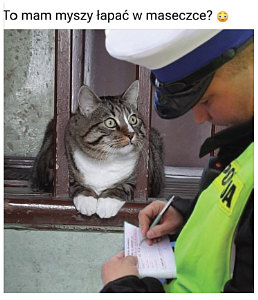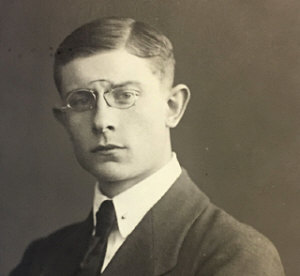Mäetagused vol. 79
Summary

-
Polish intertextual memes during the COVID pandemic
Dorota Brzozowska
Professor Institute of Linguistics, University of Opole
dbrzozowska@uni.opole.pl
Władysław Chłopicki
Professor of Linguistics Department of English Studies, Jagiellonian University
w.chlopicki@uj.edu.pl
Keywords: COVID restrictions, intertextuality, memes, socialism, stereotypes
The aim of the paper is to show the Polish story of the COVID-19 pandemic as seen through a humorous looking glass. Different stages of coronavirus presence in the media and social discourse have been accompanied by the appearance and development of jokes and memes, which illustrate the rapidly changing pandemic situation. The database consists of over three hundred memes, movies, and comments collected between February and May 2020, during the pandemic humour peak, and come mainly from private WhatsApp and Facebook accounts of the researchers. The humorous material is related to introduced restrictions, changing laws, parliamentary elections, news from other affected countries as well as seasons and festive times – especially Easter – occurring in the same period of time. The universal themes present in the humorous material travelling around the world are complemented by the strictly culturally immersed topics, reflecting the specific social and political situation in Poland. The analysis undertaken in the article focuses on various kinds of mechanisms which involve intertextuality (allusions) as well as complexity of references that function as sources of humour, with special attention being paid to cultural references, for example, films, paintings, references to political life, including those of the life under socialism as well as universal themes, such as animal memes.
-

-
COVID-19-conditioned folkloristic reactions in Belorussia
Tatsiana Valodzina
PhD, Head of the Department of Folklore and Slavic Cultures the Center for the Belarusian Culture, Language and Literature Researches of the National Academy of Sciences of Belarus
tanja_volodina@tut.by
Tatsiana Marmysh
MA in Cultural Studies, Researcher at the Department of Folklore and Slavic Cultures the Center for the Belarusian Culture, Language and Literature Researches of the National Academy of Sciences of Belarus
ta-m@tut.by
Keywords: archaic, crisis situation, laugh, ritual, pandemic
The article gives an overview of the folk culture mechanisms that helped to cope with the pandemic situation in Belorussia during the first wave of COVID-19 (until midsummer 2020). The article is based on the qualitative analysis of interview texts related to the pandemic as well as the content of internet users’ visual reactions (memes, poems, proverbs).
In folk culture the mechanisms helping to overcome the crisis situation often have a ritual-magical nature. When describing the influence of the pandemic on some practices, the authors conclude that their performing in the crisis situation was especially important for the community.
One of the ancient rituals activated for preventing the epidemic was the creation of a magic circle around the village by conducting a procession around the village with a ritual towel (‘rushnik-abydzionnik’), which had to be made within one day. On March 28, this one-day-ritual was performed in Minsk with the greatest possible adherence to tradition. The initiators and participants of the practice were mainly representatives of the Students Ethnographic Society. Not all women present knew how to spin or weave, but some of the simplest operations were mastered. The towel was carried around Minsk and brought to a stone on the site of a pagan temple in the centre of Minsk at the sunset. The towel was tied around the stone, and the latter was also covered with threads spun on the same day. The ritual relieved the tension of the participants and fostered awareness of their solidarity, strengthening collective networks, and the feeling of empathy and unity.
COVID-19 also affected the living traditions in Belarus. Some traditional practices were cancelled or postponed. The spread of the pandemic created a negative backdrop for living traditions. However, a number of rites and ceremonies were carried out despite the pandemic in accordance with their spatial and temporal reference. Due to the difficult epidemiological situation, the usual order of ceremonies was changed – their duration was reduced without changing the traditional rite structure. Only local residents participated in the rituals; although, formerly, many journalists and tourists had come to the villages from different parts of the country on the days of the ceremonies.
For tradition bearers, such practices during a pandemic are a way to relieve stress and to share problems with people with similar interests. Traditions are one of the constants of their life; maintaining them in times of crises stabilizes the community.
The coronavirus pandemic has caused a powerful explosion of folk art. The texts of various genres, both oral and written (graphic), are rapidly spreading on the Internet. A large number of them are based on the traditional worldview of Belarusians and are expressed in traditional forms (alterations, ditties, anecdotes, anti-sayings, paroemias, etc.). The role of humour has grown tremendously. Jokes and laughter in the face of an external threat are a compensatory mechanism that helps to overcome fear and uncertainty, and common laughter unites and helps to learn new rules of behaviour. Humour is not concerned with the threat of getting ill, but rather individual hygiene practices, the situation of quarantine, and circumstances of the new reality. Thus, humorous folklore becomes a way to adapt to new norms and to overcome fear and instability.
-

-
Constructing fandom at the time of corona crisis: The case studies of Estonian and Belarusian football clubs
Anastasiya Fiadotava
Junior Researcher Department of Folkloristics, Estonian Literary Museum Centre of Excellence in Estonian Studies
anastasiya.fiadotava@folklore.ee
Piret Voolaid
Senior Research Fellow Department of Folkloristics, Estonian Literary Museum Executive Manager of the Centre of Excellence in Estonian Studies
piret@folklore.ee
Keywords: Belarusian and Estonian folklore, COVID-19 pandemic, fan culture, humour, football, Internet memes, social media, sport folklore
The comparative study analyses the relationship between sports culture and the COVID-19 crisis based on the case studies of fan groups in Estonia and Belarus. Sports and the COVID-19 pandemic are closely interconnected. In the Estonian case, the official analysis results testify that during the first COVID-19 wave in spring 2020 the most affected region in the country was Saaremaa Island, where the virus was literally blown into the air by fan bugles at the international volleyball competition held on 4–5 March 2020. Belarusian sports events did not have such dramatic repercussions, but there were also coronavirus hotbeds in several popular football clubs. The two countries had different approaches to sports events. In Estonia, as in most European countries, all sports competitions and games were banned from 12 March to 17 May 2020, during the state of emergency, but in Belarus, normal sports life continued (except in the cases when there was a COVID-19 hotbed in a sports club). While Estonian football fans were forced to stay home and wait for the games to continue, Belarusian fans, unlike the rest of the world, enjoyed championship games and stadium life. The unique situation in Belarus drew the attention of world football fans to Belarusian football. During the pandemic, most fan activities took place online, making social media the most appropriate environment for this joint study.
In this article, we compare the activities of Estonian and Belarusian football clubs during the first wave of the COVID-19 pandemic and analyse how fan activities continued on Facebook. We also describe the general situation in the field of sports during the pandemic.
Our analysis shows that the pandemic not only changed the communication pattern between clubs and fans (from real life to the virtual world), but also affected the ratio of parasocial and social interaction. Despite the different situations in the two countries, there was a tendency for football players and club representatives to interact with fans more actively than usual. New forms of fandom required new creative solutions and ways of communicating, which involved humour, (audio)visual media and an emphasis on positive agenda.
-

-
Internet folklore in times of global pandemic: COVID-19 in Belarusian online humor
Anastasiya Fiadotava
Estonian Literary Museum
anastasiya.fiadotava@folklore.ee
Keywords: COVID-19, global, humor, memes, newslore
During the first months of the COVID-19 pandemic (February–July 2020) I collected 374 textual jokes, humorous images, and image macros related to the coronavirus from Belarusian social media, friends, and family members. Many of the examples in my dataset became local memes, circulating within and beyond the Belarusian mediascape. While the Belarusian government’s dismissive response to the pandemic was unique among the Eastern European nations, only 34 of my examples referred specifically to the situation in Belarus. Many more examples addressed such issues as living under a lockdown, compulsory mask wearing, and distant working and learning, even though these measures were not implemented in the country on a mass scale. This incongruity between people’s lived experience in Belarus and the content of humorous folklore circulating in the country illustrates the influence of global media coverage on vernacular humorous expressions. These vernacular expressions point to strong connections between the Belarusian mediascape and those of other countries, especially Russia, from where many of the examples originated.
The paper also reflects a broader issue of globalization and digitalization of contemporary folklore, discusses the phenomenon of newslore and illustrates how some of the common characteristics of folklore can be applied to the digital forms of vernacular expression. The paper also looks at the balance between global and local in the online folklore.
-
-
“Death is the only thing that scares”: The construction of meaning about vaccination decision on the example of influenza and coronavirus
Kadi Lubi
Associate Professor Health Education Centre, Tallinn Health Care College
kadi.lubi@ttk.ee
Eliisa Metsoja
Chief Specialist of Influenza Centre Health Board of the Republic of Estonia
Eliisa.Metsoja@gmail.com
Kaie Eha
Head of the Pharmaceutical Curriculum in English Medical Technology Education Centre, Tallinn Health Care College
Kaie.Eha@ttk.ee
Silja Mets-Oja
Head of the Health Education Centre, Tallinn Health Care College
Silja.Mets-Oja@ttk.ee
Lilian Ruuben
Head of the Medical Technology Education Centre, Tallinn Health Care College
Lilian.Ruuben@ttk.ee
Keywords: construction of illness meaning, coronavirus (COVID-19), influenza, vaccination, vaccine hesitancy
Although relatively easy to overcome for young and healthy individuals, seasonal influenza is a disease with considerable health, social, and economic consequences for society, especially for higher-risk groups. Even though vaccination against influenza is the most effective tool to prevent it, vaccination rates remain rather low. Together with the promotion of neoliberal individual responsibility over one’s health, vaccine hesitancy – a complex phenomenon indicating the lower uptake of vaccines compared to the accessibility of information and services – has risen among societies. In previous research, several barriers – for example, psychological, physical, contextual, and sociodemographic – have been identified as preventing influenza vaccine uptake among risk groups. We approach the topic by using the social constructionist theory regarding the meaning construction of illnesses on cultural, individual, and third-party level. The findings outline the importance of meaning construction on all these levels. It appears that culturally influenza has been seen as an inevitable infectious disease related to the northern climate. Due to that, influenza is not considered as a life-threatening disease that would need preventive actions, except some basic hygiene or usage of folk medicine tools (e.g., ginger and garlic). On an individual level, the meaning construction is based on individual experiences, both with the illness and the vaccine – in the case of negative experiences with vaccine, the perception of something useless or even harmful develops. In addition, it appears that people create their own strategies to rationalize rejection of vaccination for themselves. These involve considerations about belonging to the risk group or the possibility to manage daily activities in non-risky manner even when belonging to the risk group.
On the third-party level, participants saw the potential of pharmacies to alleviate practical constraints (e.g., tight schedule, daily occupation, etc.). Different media channels are also important in mediating vaccination-related information, but the rationalization and selection of the channels vary widely.
The context of the coronavirus changed the vaccination-related perception temporarily for a short term, indicating that fear-based special occasions do not entail a long-term shift in health behaviour as the development of health-related decisions and behaviour is also long-term.
-
-
The year of corona in Triinu Meres’ blog “Down with angst”
Triinu Ojamaa
Senior Research Fellow Estonian Cultural History Archives, Estonian Literary Museum, Estonia
triinu@folklore.ee
Keywords: blog, blogging behaviour, corona crisis, personal diary blog, Triinu Meres
The history of the (we)blog shows that this online genre can be evaluated as an excellent source of data for qualitative research of various problems. Some authors (e.g. Hookway 2008) even consider the blog as a research technique for exploring certain questions which deal with people’s everyday practices. This article presents the results of a case study, which are based on content analysis of a personal blog (diary blog). The study grew out of the premise that the blog owners’ posts and their readers’ comments can shed some light on ground-breaking events and social processes at both the local and global levels, which in turn can influence the bloggers’ behaviour in various ways. The source of the current study was a personal blog titled “Maha äng” (“Down with angst”), the owner of which is poet and writer Triinu Meres a.k.a. väga väga naine (very very woman). The aim was to find out whether and, if yes, then how the corona crisis has changed the blogging behaviour as an integral part of everyday life of one particular blogger. The focus was on posts and comments entered in 2020, often called the year of corona due to the global pandemic. To illuminate possible changes in blogging behaviour, the 2020 posts were analysed in the context of earlier posts archived in 2008–2019. For comparison, the Health Board’s blog was used, which documented the course of the corona crisis chronologically with factual accuracy, as well as dailies in Estonian and English. The results of the study showed that in 2020 the number of posts and the activity of commenters in Triinu Meres’ personal blog did not increase and that the corona crisis did not become the dominant topic in comparison with the blogger’s personal crisis often covered in her blog. The posts revealed some signs that suggest boredom with the corona crisis as a topic of conversation which seemed to be over-exploited by various media channels.
-

-
Nature is coming back: Dolphins and dinosaurs. About fake news, photoshop-legends and memes during corona quarantine
Eda Kalmre
Senior Research Fellow Department of Folkloristics, Estonian Literary Museum
eda@folklore.ee
Keywords: contemporary legend, fake news, meme, parody, participatory culture, rumour, social media, tall tale
The article follows the narrative trend initiated by the social media posts and fake news during the first months of the corona quarantine, which claims that the decrease of contamination due to the quarantine has a positive effect on the environment and nature recovery. The author describes the context of the topic and follows the changes in the rhetoric through different genres, discussing the ways in which a picture can tell a truthful story. What is the relation between the context, truth, and rhetoric?
This material spread globally, yet it was also readily “translated” into the Estonian context, and – what is very characteristic of the entire pandemic material – when approaching this material, truthful and fabricated texts, photos, and videos were combined.
From the folkloristic point of view, these rumours in the form of fake news, first presented in the function of a tall tale and further following the sliding truth scale of legends, constitute a part of coping strategies, so-called crisis humour, yet, on the other hand, also a belief story presenting positive imagery, which surrounds the mainly apocalyptically perceived pandemic period and interprets the human existence on a wider scale. Even if these fake news and memes have no truth value, they communicate an idea – nature recovers – and definitely offer hope and a feeling of well-being.
-

-
An imprint on Estonian folkloristics. Elmar Daniel Päss 120
Tiiu Jaago
Associate Professor at the Department of Estonian and Comparative Folklore, Institute of Cultural Research, University of Tartu
tiiu.jaago@ut.ee
Mare Kõiva
Leading Researcher and Head of the Department of Folkloristics at the Estonian Literary Museum, Head of the Centre of Excellence in Estonian Studies
mare@folklore.ee
Keywords: Elmar Päss, History of Estonian folklore, Martinmas customs and songs, Shrovetide customs and songs
Folklorist Elmar Daniel Päss (1901–1970) was one of the first researchers who was educated in folklore at the University of Tartu: the Chair of Folklore started work in the autumn of 1919, and Elmar Päss entered university in the autumn of 1922. Already as a student, he attracted the attention of folklore professor Walter Anderson with his study about drinking in Estonian proverbs and folk songs, submitted for a students’ competition in 1924. There was no unified folklore archive in Tartu at the time (it was established in 1927). The study by Päss testified to his diligence (he examined collections of Estonian folklore both in Tartu and in Helsinki) as well as his ability to systematise and analyse voluminous material. He elaborated this study and defended it as his master’s degree in 1926. After a year in military service, he started work as a folklore assistant at the University of Tartu. In 1933 he became a scientific grantee, to work on a dissertation about Estonian and Ingrian Martinmas songs. Although the first version of the manuscript was completed in 1935, he did not defend the thesis. On the one hand, new material on Martinmas customs was constantly piling up, on the other hand, the defence seemed to be postponed due to economic difficulties. The establishment of the Soviet rule in 1940 and the following war further distanced Päss from research work. In 1947 the Institute of Estonian Language and Literature was founded at the Academy of Sciences, and for three years he worked there as a folklore researcher. However, his main occupation was a schoolteacher. So his most fertile scientific career remained in the 1920s–1930s.
Three different intertwining directions can be distinguished in Päss’ scientific work: a comparative study of songs, customs related to calendar, wedding, and work, and the lore of border regions. Against the more general background of folkloristics, Päss’ research approaches are up to date: on the one hand, comparative and international research prevailing in the first decades of the century, on the other hand, considering the syncretic and functionalist viewpoint of lore that emerged in the late 1920s and in the 1930s. His studies of the customs and songs of Shrovetide and Martinmas could be part of classical Estonian folkloristics.
News, overviews
-
- Overview of acquisitions and collection work at the Estonian Folklore Archives in 2020
Ave Goršič, Mari Sarv, Kadri Tamm, and Astrid Tuisk provide an overview of the archives’ collection work and President’s folklore collection award presented to Adik Sepp, Urve Vares, and Aino Liivik.
Autumn school concentrated on interdisciplinary dialogues with healthOverview in English by Reet Hiiemäe is available in Folklore: Electronic Journal of Folklore, Vol. 82.
Pavel Limerov defended his doctoral dissertation about narratives of Christianization in Komi literary traditionMare Kõiva writes about Pavel Limerov’s doctoral dissertation “Narratives of Christianization in the Formation of the Komi Literary Tradition in the Context of the Russian Written Word (14th Century – Early 20th Century)”.
- Overview of acquisitions and collection work at the Estonian Folklore Archives in 2020
-
-
Calendar
A brief summary of the events of Estonian folklorists from December 2020 to April 2021.
-
-
Doctoral thesis on the use of observational documentary film in visual anthropological research
Liivo Niglas. Videokaameraga Siberis: vaatlev dokumentaalfilm kui audiovisuaalne etnograafia.. Dissertationes Ethnologiae Universitatis Tartuensis 12. Tartu Ülikooli Kirjastus, 2020. 347 pp.
Overview in English by Pille Runnel is available in Folklore: Electronic Journal of Folklore, Vol. 82.